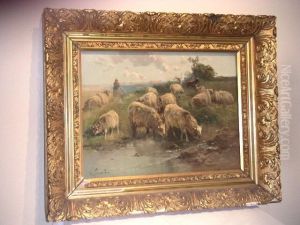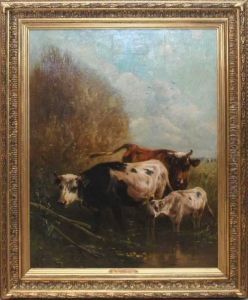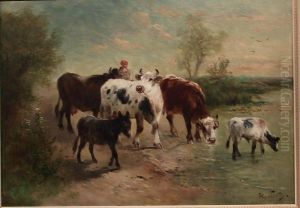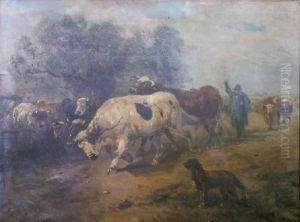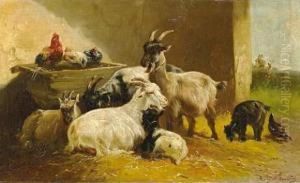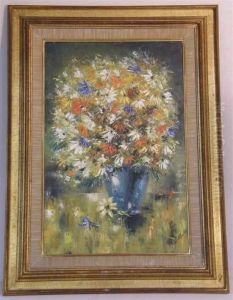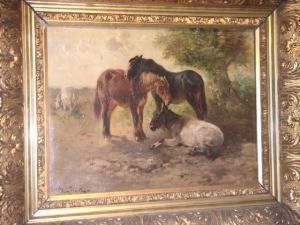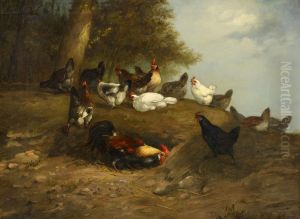Henry M. Schouten Paintings
Henry M. Schouten was a Belgian painter, best known for his depictions of animals, particularly dogs and farm animals. Born in Brussels in 1857, Schouten was part of a European artistic movement that focused on realism and naturalism, emphasizing detailed and lifelike representations of subjects.
Schouten's early life was steeped in an artistic environment, which greatly influenced his career path. Although not much is documented about his personal life or early training, it is known that he developed a profound skill in capturing the essence of animals, showcasing not just their physical accuracy but also hinting at their temperament and emotions. His works often portrayed animals in dynamic poses, set against the backdrop of lush, idyllic landscapes or within the rustic interiors of barns, capturing the rural life of the time with a romantic flair.
Throughout his career, Henry M. Schouten remained active in the art scene, participating in exhibitions and gaining popularity among collectors. His paintings are characterized by a rich palette, meticulous attention to detail, and a masterful use of light and shadow, which brought his subjects to life. Despite his focus on animals, Schouten's portfolio also includes a variety of other subjects, including landscapes, still lifes, and scenes of rural life, demonstrating his versatility as an artist.
Schouten's contribution to the art world remained significant throughout the late 19th and early 20th centuries. After his death in 1927, his works continued to be admired for their artistic quality and historical value, offering insights into the rural and bucolic life of his era. Today, Henry M. Schouten's paintings are sought after by collectors and can be found in private collections and occasionally in museums across Europe. His legacy lives on as a testament to his skill in capturing the beauty and essence of the natural world, particularly in his beloved depictions of animals.
